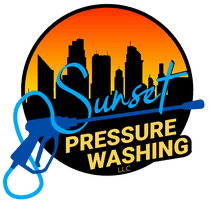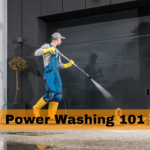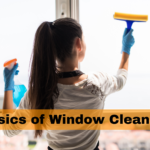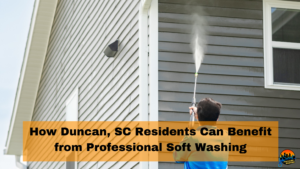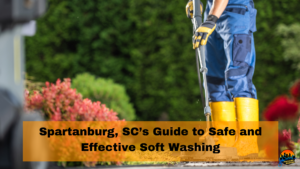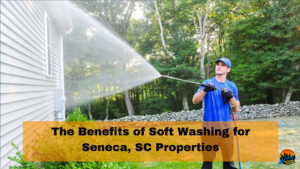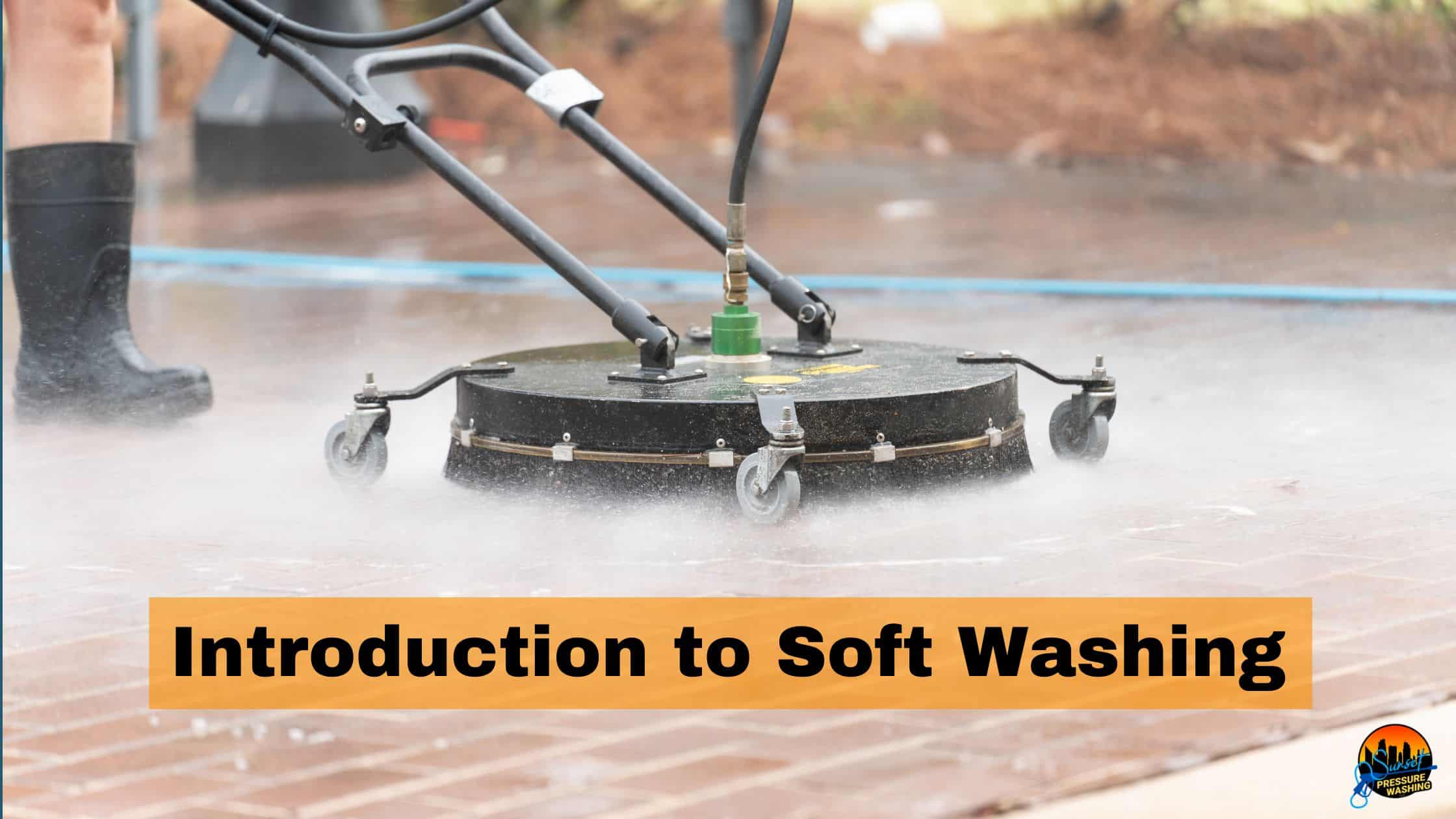
Introduction to Soft Washing
Soft washing is an innovative cleaning method that blends low-pressure water spray with specialized solutions, tailored to safely and effectively remove organic contaminants like mold, mildew, and algae from delicate surfaces such as roof shingles, sidings, and painted areas. This gentle yet powerful approach not only cleans but also sanitizes, extending the lifespan of surfaces without the risks associated with high-pressure washing. Gaining popularity for both residential and commercial applications, soft washing is a sustainable, efficient solution for maintaining property aesthetics and integrity.
Understanding Soft Washing
Soft washing is an innovative cleaning method, distinctly different from traditional power washing, that utilizes a low-pressure cleaning technique. This method combines a gentle water spray with specialized cleaning solutions to effectively remove dirt, mold, algae, and other organic stains from exterior surfaces of buildings, homes, and outdoor structures.
The Principle Behind Soft Washing
The core of soft washing lies in its use of eco-friendly chemical solutions, which are applied to the surface at a low pressure. These solutions are designed to target dirt, mildew, moss, and other organic materials. The process involves applying the cleaning agent and allowing it to dwell for a period, breaking down the contaminants. After the solution has done its work, it is gently rinsed away with a low-pressure water spray, leaving the surface clean and undamaged.
Why Low Pressure is Key
One of the critical aspects of soft washing is its low-pressure approach. Traditional pressure washing relies on high pressure to blast dirt and grime off surfaces, which can often be too harsh for many materials. Soft washing, by contrast, uses a pressure similar to that of a garden hose. This gentler approach is especially important for delicate surfaces such as roof shingles, siding, wood decks, and painted surfaces, where high pressure can cause damage.
The Role of Cleaning Agents
In soft washing, the cleaning agents do most of the work. These solutions are a blend of surfactants, mildewcides, and sometimes bleach, which effectively remove organic growth and stains. The cleaning agents are carefully chosen to be tough on grime but gentle on surfaces and environmentally friendly. They are often biodegradable, ensuring they don’t harm the surrounding landscape or ecosystem.
Safety and Environment
Soft washing is considered a safer and more environmentally responsible cleaning method. The low pressure reduces the risk of damage to property and injury to the person performing the cleaning. Additionally, the eco-friendly cleaning agents are designed to be safe for use around pets and plants, making this method a conscientious choice for residential and commercial cleaning.
The History and Evolution of Soft Washing
The development of soft washing as a cleaning method is a fascinating journey that reflects the evolving needs and understanding of property maintenance and care. This section delves into the origins of soft washing, its evolution over time, and how it has become a critical technique in the cleaning industry.
Early Days: The Predecessors of Soft Washing
The concept of soft washing originated as a response to the limitations and damages caused by high-pressure washing techniques. In the early days of exterior cleaning, high-pressure systems were the norm. These methods were effective in removing tough dirt and stains but often resulted in damage to softer or more delicate surfaces like roof shingles, wood sidings, and painted surfaces. This led to a growing need for a gentler, yet equally effective cleaning method.
The Birth of Soft Washing: A Gentler Approach
Soft washing began to gain prominence in the late 20th century. This approach was initially developed by cleaning professionals who recognized the need to clean surfaces like roofs and sidings without causing harm. They started experimenting with lower pressure systems and combining them with chemical solutions to achieve effective cleaning. The key breakthrough was realizing that with the right cleaning agents, the need for high pressure could be greatly reduced.
Chemical Innovations: The Heart of Soft Washing
The evolution of soft washing is closely linked to advancements in chemical cleaning solutions. Early soft washing solutions were often simple mixtures of bleach and water, but over time, these evolved into more sophisticated formulas. These new solutions were not only more effective at breaking down organic growth like algae and mold but also safer for the environment and surrounding plant life.
The Rise of Eco-Friendly Practices
As environmental awareness increased, soft washing adapted. Modern soft washing solutions are a far cry from the harsh chemicals used in the past. Today’s solutions are biodegradable and environmentally friendly, reflecting a commitment to sustainable practices. This change has been crucial in making soft washing a preferred method for both residential and commercial property owners who are conscious about their environmental impact.
Soft Washing Today: A Mainstream Method
Today, soft washing is recognized as a vital part of exterior property maintenance. It’s not just limited to roofs and sidings but is used on a variety of surfaces, including decks, patios, and even outdoor furniture. Its effectiveness in safely cleaning and maintaining properties has led to widespread adoption, both by professional cleaning services and by DIY enthusiasts.
Soft Washing vs. Pressure Washing
Soft Washing
- Pressure Level: Utilizes low-pressure water spray, similar to that of a garden hose.
- Cleaning Agents: Employs special cleaning solutions that include surfactants, mildewcides, and sometimes bleach.
- Surface Suitability: Ideal for delicate surfaces such as roof shingles, sidings, wood decks, and painted surfaces.
- Cleaning Method: Relies more on the chemical action of cleaning agents to loosen dirt and organic growth.
- Environmental Impact: Often uses biodegradable and eco-friendly cleaning solutions, reducing harm to surrounding plants and wildlife.
- Risk of Damage: Lower risk of surface damage due to the gentle application process.
- Effectiveness: Highly effective against organic stains, mold, mildew, and algae.
- Application: Best suited for surfaces that could be damaged by high pressure or require gentle handling.
Pressure Washing
- Pressure Level: Uses high-pressure water spray, significantly stronger than a garden hose.
- Cleaning Agents: Typically relies on the force of water, with less emphasis on chemical cleaning agents.
- Surface Suitability: More suitable for hard, resilient surfaces like concrete driveways, brick, and stone walkways.
- Cleaning Method: Primarily uses physical force of water to dislodge dirt, grime, and loose paint.
- Environmental Impact: Potential for more environmental impact due to the higher water usage and runoff.
- Risk of Damage: Higher risk of damaging delicate surfaces, including chipping, pitting, or stripping paint.
- Effectiveness: Very effective for removing stubborn dirt, mud, and grime on hard surfaces.
- Application: Ideal for surfaces that can withstand high pressure and require deep cleaning.
The Science Behind Soft Washing
Soft washing is not just a cleaning method; it’s a science that combines chemistry and physics to effectively and safely clean exterior surfaces. Here’s an in-depth look at the science behind this innovative cleaning technique:
The Chemistry of Cleaning Agents
- Active Ingredients: Soft washing solutions typically contain a blend of surfactants, bleach (sodium hypochlorite), and water. The surfactants reduce surface tension, allowing the solution to spread and penetrate more effectively, while the bleach acts as a disinfectant and stain remover.
- Biodegradability: Many modern soft washing solutions are designed to be environmentally friendly and biodegradable, breaking down into harmless substances after use.
- Effectiveness Against Organisms: These solutions are particularly effective against organic growths such as mold, mildew, algae, and moss. The chemical composition targets these organisms, killing them and inhibiting future growth.
The Physics of Low-Pressure Application
- Gentle Pressure: Soft washing uses a low-pressure spray, typically between 40 to 80 PSI (pounds per square inch), which is just a bit more forceful than a regular garden hose.
- Uniform Coverage: The low pressure ensures a uniform application of the cleaning solution, which is essential for its effectiveness and for avoiding streaks or missed spots.
- Minimizing Damage: The gentle nature of the pressure prevents damage to delicate surfaces like roof tiles, window seals, and aged wood.
The Interaction Between Solution and Surface
- Dwell Time: The effectiveness of soft washing heavily relies on the dwell time, which is the period the solution stays on the surface before rinsing. This allows the chemicals to react with and break down the dirt and organic material.
- Thorough Cleaning: The chemical reaction loosens the grip of the dirt, mold, and other substances, making it easy to rinse them away without the need for high pressure.
Environmental Considerations
- Safe Runoff: Properly formulated soft washing solutions are safe for the environment. When rinsed, the runoff does not harm the surrounding vegetation or soil.
- Water Efficiency: Soft washing is generally more water-efficient compared to pressure washing, as the cleaning action relies more on the chemical solution than on the volume of water.
Equipment and Tools for Soft Washing
Soft washing requires specific equipment and tools to effectively and safely clean exterior surfaces. This section outlines the essential items needed for a soft washing setup, whether for professional use or a DIY project.
Soft Wash System Components
- Low-Pressure Pump: The heart of a soft washing system is a low-pressure pump designed to operate at around 40 to 80 PSI. This pump delivers the cleaning solution at the right pressure to clean effectively without causing damage.
- Mixing Tanks: Tanks or containers for mixing the cleaning solution. These should be made of materials that can safely hold chemical mixtures, typically polyethylene or other non-reactive materials.
- Nozzles and Tips: Soft wash systems use specialized nozzles and tips designed for low-pressure spraying. These nozzles ensure even distribution of the cleaning solution across surfaces.
Delivery System
- Hoses: Durable hoses are required to transport the cleaning solution from the mixing tank to the nozzle. These hoses should be chemically resistant and able to handle the specific pressure of the system.
- Reels: Hose reels help in managing and storing the hoses, keeping them organized and accessible.
Chemical Solutions
- Cleaning Agents: A range of cleaning solutions are available for soft washing, formulated to tackle different types of dirt and organic growth. It’s important to choose the right solution based on the specific cleaning task.
- Surfactants: These are added to cleaning solutions to improve their effectiveness by reducing surface tension, allowing the solution to spread and penetrate more easily.
Safety Equipment
- Protective Gear: Safety is paramount in soft washing. Protective gear includes gloves, goggles, and respiratory protection, especially when working with chemical solutions.
- Waterproof Clothing: To stay dry and protected from chemical splashes, waterproof clothing or a rain suit is recommended.
Additional Tools and Accessories
- X-Jet or Downstream Injector: These tools are used for applying the cleaning solution. An X-Jet is attached directly to the nozzle, while a downstream injector is placed between the hose and the pump.
- Brushes and Poles: For stubborn stains or areas that need extra agitation, soft brushes on extendable poles can be used.
Step-by-Step Guide to Soft Washing
Step 1: Preparing the Area
- Clear the Area: Remove any movable objects such as outdoor furniture, potted plants, or vehicles from the area to be cleaned.
- Protect Landscaping: Cover or wet down plants, grass, and shrubs near the cleaning area to protect them from potential chemical overspray.
- Close Windows and Doors: Ensure all windows and doors are closed to prevent water and chemicals from entering the building.
Step 2: Mixing the Cleaning Solution
- Select the Right Chemicals: Choose a cleaning solution appropriate for the surface and type of dirt or organism you are removing.
- Prepare the Solution: Follow the manufacturer’s instructions to mix the chemicals with water in the appropriate ratios. Use a mixing tank or container for this purpose.
Step 3: Applying the Cleaning Solution
- Test the Solution: Apply the solution to a small, inconspicuous area first to test for any adverse reactions.
- Spray Evenly: Use a low-pressure nozzle to apply the solution evenly over the surface. Start from the bottom and work your way up to avoid streaking.
- Ensure Adequate Coverage: Make sure the entire area is covered with the solution, paying extra attention to areas with heavy staining or organic growth.
Step 4: Allowing the Solution to Dwell
- Dwell Time: Allow the solution to sit on the surface for the recommended period, usually around 10 to 15 minutes. This time allows the chemicals to react with and break down the dirt and organic material.
- Do Not Let Dry: Ensure the solution does not dry on the surface. If necessary, reapply to keep the surface wet during the dwell time.
Step 5: Rinsing the Surface
- Gentle Rinse: After the dwell time, rinse the surface with a low-pressure water spray. Start from the top and work your way down to ensure a thorough rinse.
- Check for Residual Dirt: As you rinse, check for areas that may need a second application or a bit more attention.
Step 6: Post-Cleaning Inspection
- Inspect the Surface: Once the area is dry, inspect it for any missed spots or areas that might need a touch-up.
- Reposition Items: Return any items or furniture that were moved during the preparation phase.
Step 7: Cleanup and Equipment Maintenance
- Clean Your Equipment: Properly clean and store your soft washing equipment to ensure its longevity and readiness for the next use.
- Dispose of Chemicals Properly: Follow local regulations for the disposal of any leftover chemical solutions.
Benefits of Soft Washing
Soft washing is a preferred cleaning method for many homeowners and professionals due to its numerous benefits. Understanding these advantages can help you make informed decisions about property maintenance and cleaning methods.
Gentle on Surfaces
- Reduced Damage Risk: The low-pressure nature of soft washing minimizes the risk of damaging surfaces like roof tiles, siding, and painted areas.
- Preserves Integrity: It helps in maintaining the structural and aesthetic integrity of the surface being cleaned.
Effective Cleaning
- Thorough Removal: Soft washing effectively removes dirt, algae, mold, mildew, and other organic substances.
- Long-Lasting Results: It not only cleans but also kills the spores and fungus, leading to longer-lasting cleanliness.
Environmentally Friendly
- Biodegradable Chemicals: Many soft washing solutions are eco-friendly and biodegradable, reducing environmental impact.
- Water Conservation: It uses less water compared to traditional pressure washing, contributing to water conservation efforts.
Health and Safety
- Reduces Allergens: By removing mold, mildew, and other allergens, soft washing can improve the air quality around your home.
- Safety in Application: The low-pressure equipment and techniques are generally safer to operate, reducing the risk of accidents.
Cost-Effective
- Preventive Maintenance: Regular soft washing can prevent damage caused by organic growth, potentially saving money on repairs.
- Efficiency: It requires less water and energy than traditional high-pressure washing, leading to lower utility costs.
Versatility
- Wide Range of Applications: Soft washing can be used on a variety of surfaces, including roofs, decks, siding, and outdoor furniture.
- Adaptability: The method can be tailored with specific chemicals and techniques to suit different materials and levels of dirtiness.
Aesthetic Improvement
- Enhances Curb Appeal: Clean and well-maintained exterior surfaces significantly improve the appearance and curb appeal of your property.
- Restores Original Look: Soft washing can restore the original look and color of surfaces without the abrasive effects of high-pressure washing.
Longevity
- Extends Lifespan: By gently cleaning without causing erosion or wear, soft washing can extend the lifespan of exterior surfaces.
- Prevents Decay and Deterioration: Regular removal of harmful substances helps in preventing decay and deterioration of building materials.
Common Applications of Soft Washing
Soft washing is a versatile and effective cleaning method suitable for a variety of surfaces and settings. Its gentle approach makes it ideal for numerous applications, ensuring thorough cleaning without risking damage. Here are some common applications of soft washing:
Residential Properties
- Roof Cleaning: Perfect for cleaning asphalt shingles, tiles, and metal roofs without causing damage that high-pressure washing might inflict.
- Siding Cleaning: Ideal for vinyl, wood, stucco, and other types of siding, effectively removing mold, mildew, and stains.
- Deck and Patio Washing: Safely cleans wooden decks, patios, and composite materials, restoring their appearance and removing slippery algae and mildew.
Commercial Buildings
- Exterior Walls: Cleans the exterior surfaces of office buildings, retail stores, and other commercial structures, improving curb appeal.
- Walkways and Entries: Ensures safe, clean entryways and walkways for businesses, removing dirt and organic buildup.
- Parking Areas: Suitable for cleaning parking garages and lots, removing surface stains and pollutants.
Public and Community Spaces
- Schools and Playgrounds: Provides safe and effective school cleaning by gently washing school exteriors and playground equipment without using high-pressure systems that could damage surfaces, ensuring a clean and welcoming environment for students and staff.
- Parks and Recreational Facilities: Ideal for cleaning park benches, public restrooms, picnic areas, and outdoor fixtures.
Specialized Structures
- Historical Buildings: Gentle enough for cleaning and preserving historical structures without harming delicate materials or historical integrity.
- Monuments and Statues: Effective in restoring and maintaining monuments and statues without the abrasive effects of high-pressure washing.
Other Applications
- Fences and Railings: Suitable for various types of fencing materials, including wood, vinyl, and metal, removing dirt and organic growth.
- Outdoor Furniture: Cleans outdoor furniture made of wood, plastic, or metal, extending its life and maintaining its appearance.
- Swimming Pools and Surrounding Areas: Cleans pool decks and surrounding areas, removing algae and chemical stains.
Choosing a Professional Soft Washing Service
Discover the gentle power of Soft Washing with Sunset Pressure Washing, the ideal solution for maintaining your property’s beauty without the harsh effects of high-pressure washing. This innovative method not only cleans but also preserves your exterior surfaces, ensuring they look pristine while extending their lifespan. From healthcare cleaning and school cleaning to apartment cleaning and other industries, Soft Washing is a versatile and effective way to maintain the appearance and integrity of your property.
This method is not only effective against dirt, mold, and algae but also ensures the longevity of your exteriors by avoiding the potential damages of high-pressure washing. Choose Sunset Pressure Washing for a cleaning solution that combines efficiency with care. We proudly offer soft washing in Columbia SC, Greenwood SC, Seneca SC, and other parts of South and North Carolina. Visit our website to explore how soft washing can enhance and protect your property’s appearance, making it a wise choice for your maintenance needs.
